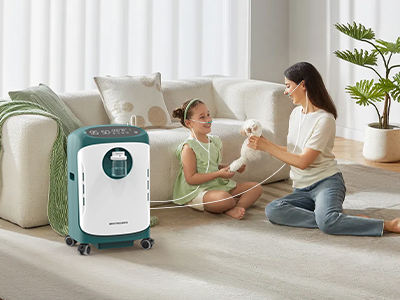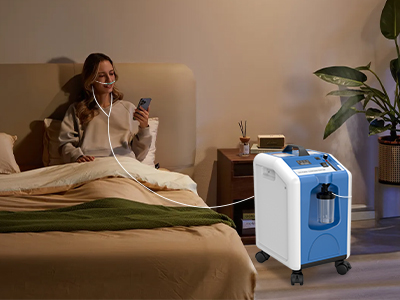22 Aug 2025
Breathing is meant to be soothing, not punctuated by the mechanical drone of a wheezing machine. Enter the world of silent oxygen concentrator , designed to give you the life-giving support you need without the soundtrack of a jet engine in your living room. For many users, the noise factor is more than an inconvenience—it’s a daily stressor. Quiet machines can restore not only oxygen levels but also peace, sleep, and sanity.

Why Noise Matters More Than You Think
Imagine trying to watch your favorite show while your oxygen concentrator drowns out the dialogue. Or attempting a nap only to be serenaded by an endless mechanical hum. Noise isn’t just irritating—it affects mood, rest, and even cardiovascular health.
A silent oxygen concentrator doesn’t simply improve your environment; it transforms it. Conversations become clearer. Sleep deepens. The home regains its calm rather than feeling like a hospital annex.
What Counts as “Silent”?
No machine is completely noiseless. The term “silent” is relative, but in the oxygen concentrator world, it means devices designed to whisper rather than roar.
Decibels under 40 are generally considered peaceful—comparable to a quiet library.
Between 40–50 decibels is tolerable but noticeable, like a fridge running in the background.
Over 50 decibels starts to intrude into daily life, especially if you value your sleep.
Manufacturers who prioritize silence often use advanced insulation, smoother motors, and clever engineering to hush the beast inside the box.

Benefits Beyond Just Quiet
Silent oxygen concentrators don’t only serve your ears; they serve your entire lifestyle.
Better sleep quality without interruptions from mechanical grumbles.
Reduced stress—both for the user and for everyone sharing the home.
Improved focus for activities like reading, working, or simply enjoying silence.
Discreet use—visitors notice the person, not the machine.
In a world where home is sanctuary, silence is not just pleasant—it’s therapeutic.
Choosing the Right Silent Model
Not all “quiet” oxygen concentrators are equal. Some boast about silence but reveal their true selves once plugged in. Selecting wisely means balancing stealth with strength.
Check your prescription flow rate—a low-noise 3L oxygen concentrator may not meet higher oxygen demands.
Compare decibel ratings—marketing terms like “ultra-quiet” are meaningless without numbers.
Consider portability—smaller, lighter models often make less fuss.
Look for user reviews—real ears don’t lie.
Don’t be seduced by sleek design alone. True silence comes from the inside out.
Placement Makes a Difference
Even the quietest oxygen concentrator benefits from strategic placement. Where you set it can make the difference between gentle background hum and noticeable distraction.
Keep it on a flat, stable surface to minimize vibrations.
Place it a few feet away from your bed or favorite chair.
Avoid corners where noise bounces and amplifies.
Use soft furnishings—rugs or curtains—to absorb sound.
Think of it as arranging furniture not for décor, but for acoustics.
Maintaining the Whisper
Over time, even silent oxygen concentrators can develop a louder voice if neglected. Regular maintenance keeps them humming discreetly.
Clean or replace filters according to the manual.
Ensure proper ventilation so the machine doesn’t overheat and strain.
Schedule servicing—a technician can hush rattles and groans before they grow.
Silence is a partnership: the machine does its part, and you do yours.
When Silence Is Golden
For people who rely on oxygen 24/7, the value of a quiet oxygen concentrator can’t be overstated. Peace at night, tranquility during the day, and dignity in every social interaction—these are priceless benefits. Silent oxygen concentrators are not just devices; they are companions that respect both your need to breathe and your need to live undisturbed.
Keywords: Oxygen Concentrator
Originally published 22 Aug 2025, updated 22 Aug 2025.